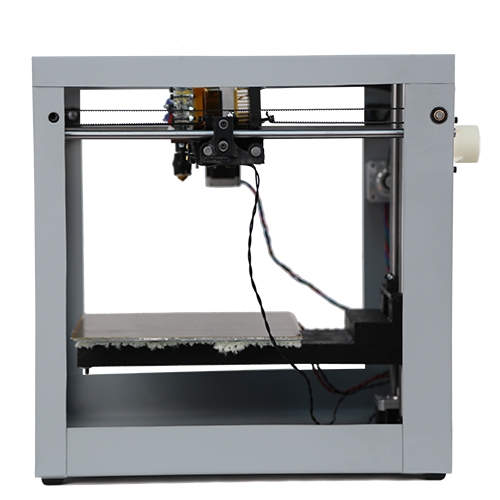Study Predicts Home Use of Additive Manufacturing

Home 3D printers, like the Solidoodle 3, could end up saving you money. Courtesy of Solidoodle.
July 30, 2013
I’ve been saying for a while now that it’s just a matter of time before additive manufacturing (AM) enters home use in a big way. Certainly not every expert agrees with me, but plenty of experts claimed people would have no use for personal computers, either. Even with the potential risks associated with desktop material extrusion systems (MakerBot, RepRap, etc.), owning a 3D printer offers enough value to be worth using.
Now I have scientific research to back up my claims. A new study from Michigan Technological University (MTU) has declared that the cost and personal manufacturing potential offered by home 3D printers has reached the point where it would be worthwhile for most homes to own one. The study is titled “Life-Cycle Economic Analysis of Distributed Manufacturing with Open-Source 3D Printers.”
To determine the value of a home AM system, researchers conducted a lifecycle economic analysis comparing the cost of a 3D printer, materials used, and 3D files required, versus the cost of replacing common items found around the home. The study focused on 20 items with free designs found on Thingiverse, such as an iPhone case, shower head, paper towel holder and a garlic press.
The study concluded that buying each of the 20 items separately would cost $312 to $1,944, while the cost of building the items as needed was only $18 in materials. Even if you add in the cost of a 3D printer to that total, with the least expensive systems going for $300 and higher end home systems costing around $1,500, owning a 3D printer has still saved the household money. After adding in the cost to continue buying new material to run the 3D printer, usage over long periods can result in substantial savings.
From the paper:
The results show that even making the extremely conservative assumption that the household would only use the printer to make the selected twenty products a year, the avoided purchase cost savings would range from about $300 to $2000/year. Assuming the 25 hours of necessary printing for the selected products is evenly distributed throughout the year, these savings provide a simple payback time for the RepRap in 4 months to 2 years and provide an ROI between >200% and >40%.
The research also doesn’t take into account the upcoming end of a number of patents that will open up new AM processes to wider commercial ventures. Material extrusion has a number of limitations that aren’t shared by several processes that are currently protected by patent rights. Adding home sintering 3D printers to the mix should only increase the potential for personal manufacturing.
Below you’ll find a video extoling the virtues of personal 3D printing.
Source: Academia.edu
Subscribe to our FREE magazine, FREE email newsletters or both!
About the Author
John NewmanJohn Newman is a Digital Engineering contributor who focuses on 3D printing. Contact him via [email protected] and read his posts on Rapid Ready Technology.
Follow DE






